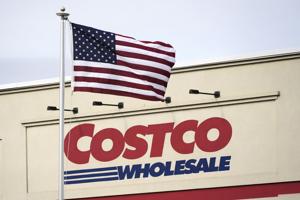The ongoing legal confrontation between athletic apparel giant Lululemon and warehouse retail behemoth Costco has cast a stark spotlight on the escalating prevalence of “fashion dupes” and the complex intellectual property challenges they present within the global retail landscape. This high-profile legal dispute underscores a pervasive trend where more affordable iterations of popular, high-end designs are becoming ubiquitous, increasingly drawing established brands into contentious courtroom battles aimed at safeguarding their original creations.
The phenomenon of “fashion dupes” refers to visually similar, yet significantly less expensive, versions of luxury or designer clothing and accessories. Driven by consumer demand for accessibility and affordability, these look-alike products have proliferated rapidly, fueled by the swift dissemination of trends across social media platforms and the expansive reach of e-commerce. This evolving consumer behavior creates a challenging environment for brands like Lululemon, which invest heavily in design and innovation.
At the heart of the current legal dispute, Lululemon has formally accused Costco of selling products that closely mimic its proprietary designs, specifically alleging patent and trademark infringement. The lawsuit centers on what Lululemon claims are unauthorized copies of its distinctive “Align” leggings, a staple product recognized for its unique fabric and fit. This type of intellectual property infringement highlights the inherent difficulty for companies in policing their designs when mass-produced alternatives flood the market, often at a fraction of the original price.
The legal standing of “fashion dupes” often resides in a contentious legal gray area, making cases like the Lululemon-Costco dispute particularly significant. While direct counterfeiting is unequivocally illegal, “dupes” typically make subtle design alterations to circumvent strict intellectual property laws, thereby complicating infringement claims. The outcome of this specific lawsuit could establish a critical precedent for the broader retail industry, influencing how brands protect their designs and how retailers manage their supply chains and product offerings in the future.
This ongoing legal battle also signals a significant shift in market dynamics, compelling both designer brands and large-scale retailers to re-evaluate their strategies. For brands, the challenge lies in deciding whether to aggressively pursue legal action against “dupes,” adapt their marketing to highlight authenticity and quality, or even explore more accessible lines. For retailers like Costco, the risk of sourcing products that could lead to such high-stakes legal disputes necessitates more rigorous due diligence and a heightened awareness of intellectual property rights in their procurement processes.
Ultimately, the rise of “fashion dupes” reflects a broader tension between consumer desire for affordable style and the imperative for brands to protect their creative investments and brand integrity. As consumers continue to seek value, and as digital platforms continue to facilitate the rapid spread of trends, the retail sector will likely witness more of these legal disputes, forcing a redefinition of intellectual property boundaries in an increasingly competitive and interconnected global market.
Discover more from The Time News
Subscribe to get the latest posts sent to your email.





